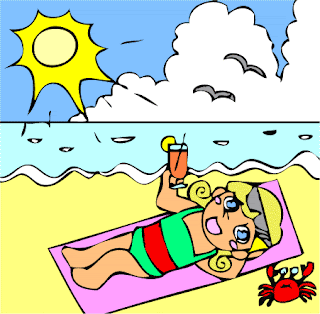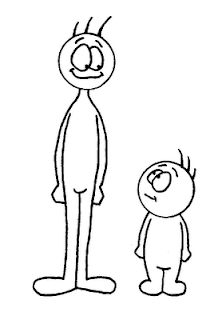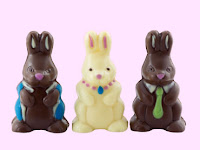This is a videocast of some American Superstitions. Please leave a comment if you have any questions.
Month: March 2010
My Introduction – videocast
This is my first videocast and I thought it would be fitting to have an introduction of myself.
Conditional Phrases
If I had enough money, I would buy a mansion! (I wish!)
The above sentence is an example of a sentence with a conditional clause. There are 4 types of conditional clauses.
Type 0:
These are general truths or cause and effects.
‘If’ + a verb.
Examples:
If I eat too much, I will get fat. or
I will get fat, if I eat too much.
Type 1:
These are things that are probable, because they describe things that could possibly come true or they are true. These take place in the present or the future.
‘If”+ verb in present tense (conditional clause) + modal verb (main clause)
Example:
If you go home, you can sleep!
You can also have the same setup as above except use an imperative verb instead of a modal.
Example:
If you go home, Sleep!
The last kind of type 1 is made by: an imperative verb (conditional clause) + and/or + modal verb (main clause).
Example:
Go home and you can sleep!
Type 2:
This category is about unreal or hypothetical things that happen in the present. Even though the verb is in the past we are talking about the present.
If + verb (past) (conditional clause)+ modal (main clause)
Examples:
If you went home, you could sleep.
If I had a pen, I would write a letter.
You can use these modals with type 2: would, would have to, would be able to, could.
Type 3:
This type is about unreal things that happened in the past. (They did not happen.)
If + verb (past perfect) (conditional clause) + modal + verb (present perfect)(main clause)
Example:
If he had asked for directions, he would not have gotten lost.
Exercise:
Now think about what you would do if you won a million dollars! Write or say some sentences using the different types of conditional phrases.

Abbreviations in English
 Here is a list of some of the most used abbreviations in English.
Here is a list of some of the most used abbreviations in English.
FYI – For Your Information
IMO – In My Opinion
IMHO – In My Humble Opinion
IMNSHO – In My Not So Humble Opinion
ROFL – Roll On Floor Laughing
ROFLMAO – Roll On Floor Laughing My Bum Off (Not really Bum, but you can guess what it is.)
LMAO – Laugh my Bum off (Same as above)
DH – Dear Husband
DW – Dear Wife
DD – Dear Daughter
DS – Dear Son
TTFN – Ta Ta For Now (Just a way to say good-bye)
VIP – Very Important Person
BRB – Be Right Back
BTW – By The Way
w/ – with
w/o – without
FAQ – Frequently Asked Questions
LOL – Laugh Out Loud
OMG – Oh My God
TTYL – Talk To You Later
BTDT – Been there Done That
EOB – End of Business (the end of the work day)
EOD – End of Day
HTH – Hope This Helps
MPH – Mile Per Hour
WTF – What the *beep*
ASAP – As Soon As Possible
JK – Just Kidding
JJ – Just Joking
TGIF – Thank God It’s Friday
Ex . – Example
Etc. – Et cetera (Latin) (It means: and so on or and other things)
i.e. – id est (Latin) (It means: that is or in other words)
e.g. – exempli gratia (Latin) (It means: for the sake of example or simply for example)
A Little Slang for the Soul
Time for a wee bit of slang! I know some teachers don’t like to teach slang, but the fact is a lot of English speakers use slang, so it’s important to learn some. And I think it’s fun to learn.

kick back – relax
After a hard day at work, I like to kick back and enjoy a cup of hot chocolate.
rock – to be great
You rock! (This is an expression a lot of people use. It means they are happy with what you just did or something you are about to do.)
goofed up – to mess up/make a mistake
I goofed up when I wrote a tweet today; I spelled a word wrong.
John – toliet
Hey, where’s the John?
catch some rays – to lay out in the sun and try to get a sun tan
After lunch, I’m going to the pool to catch some rays!
nuts – crazy
That guy just went swimming and it’s freezing outside. He’s nuts!
peeps – people/friends
I’m going to call up my peeps and see if they want to go to the movies.
umpteen – many
I asked my son umpteen times to please clean his room. (This is true!)
gut – stomach
Oh man, that guy just hit me in my gut!
Oh man – to be surprised about something
Oh man, I can’t believe I just lost that game.
Practice with comparisons
 When you look at these apples, what do you see?
When you look at these apples, what do you see?
I see a green apple and a red apple.
How can you compare them? Think of how they are similar and different.
Here are some sample comparisons I came up with: The green apple is smaller than the red apple. The red apple is darker than the green apple.

Which of these cartoon characters is the tallest?
The boy with blond hair (or Fred) is the tallest.
What can you say about the two girls?
You can say that the Brunette has shorter hair. You can say that the red head has longer hair. What can you say is similar between the boys?
Fred’s hair is as long as Shaggy’s hair.

Now look at these animals. Who has the longest neck and is the tallest animal?
The giraffe has the longest neck and is the tallest of all of the animals.
Now, compare the tails of the animals.
You could something like this: The monkey has a shorter tail than the alligator.
Try to make up some sentences on your own and post a comment if you have any questions.
Adjectives in English
 I usually have all fun stuff on my blogs, but it’s time to practice some grammar. There will be times when you need to compare one thing to another and here is how to make comparisons in a nut-shell. The rules sections are very detailed rules, it’s not important to memorize them, I just want to make sure you have all of the information.
I usually have all fun stuff on my blogs, but it’s time to practice some grammar. There will be times when you need to compare one thing to another and here is how to make comparisons in a nut-shell. The rules sections are very detailed rules, it’s not important to memorize them, I just want to make sure you have all of the information.
There are three types of comparatives: superiority, inferiority and equality. They are formed with adjectives or adverbs.
Examples:
I have a spicier pizza than you do – superiority
You have fewer shoes than I do – inferiority
He is as bald as that man over there. – equality
Superiority shows something it better than something else. The inferiority shows that something is worse than something else and equality shows that something is equal to something else.
Rules:
The rules for forming comparatives are: if there is only one syllable which ends in ‘e’, you add an ‘r’ to the end. If there is a word with only one syllable with one vowel and one consonant at the end of the word, an ‘er’ is added to the end, after doubling the last consonant. Other instances of 1 syllable words, add an ‘er’ to the end of the word. If there is a two syllable word ending in ‘y’, then change the ‘y’ to an ‘i’ and add ‘er’. If the word has two or more syllables and does not end in ‘y’, then use the word ‘more’ before the adverb or adjective.
Superlatives work similar to comparatives. There are superiority and inferiority forms of superlatives.
Examples:
That is the prettiest shirt in the store. – superiority
I like cabbage the least out of all of the vegetables. – inferiority
Rules:
The rules for forming superlatives are: if there is only one syllable which ends in ‘e’, you add an ‘st’ to the end. If there is a word with only one syllable with one vowel and one consonant at the end of the word, an ‘est’ is added to the end, after doubling the last consonant. Other instances of 1 syllable words, add an ‘est’ to the end of the word. If there is a two syllable word ending in ‘y’, then change the ‘y’ to an ‘i’ and add ‘est’. If the word has two or more syllables and does not end in ‘y’, then use the word ‘most’ before the adverb or adjective. ‘Least’ works the same way as ‘most.’
And like with everything there are exceptions to these rules.
Exercise: Look at the picture on this blog. What can you say about the 2 people? Make up a few sentences.
You can say: The man on the left is taller than the one on the right. The man on the right is shorter than the one on the left. The thinnest man is also the tallest man. The chubbiest man is also the shortest man.
English Riddles
I’m in a silly mood today, so I thought I’d post a few English riddles to get you thinking…perhaps you have similar ones in your country?
Q – What has 2 hands, a face but it doesn’t have arms or legs?
A – A clock.
(Explanation – The front of the clock is called the face. The 2 arrowed lines that show the time are called hands in English.)
Q – What are the most 3 important rings in a person’s life? 
A – Engagement ring, Wedding ring, and suffering.
(Explanation – Suffering has ‘ring’ at the end of it. This is a play on words. Also, note that in the United States, the man gives the woman an engagement ring when he proposes and then a wedding ring at the wedding ceremony. Men only receive a wedding ring at the wedding ceremony. Lucky girls – we get 2!)
Q – Why are baseball stadiums so cold? 
A – There is a fan in every seat.
(Explanation – Fan is a word for someone who cheers on a sports team and also it is a word for an eletric device that cools down a room.)
Q – Which word in English has 11-letters and everyone pronounces it incorrectly?
A – Incorrectly!
(Explanation – I think this one speaks for itself, since we all say ‘incorrectly’ as it is said.)
Q – Which room has no doors and no windows.
A – A mushroom.
An American Grocery Store
I decided to take some pictures of an American grocery store today. You can say supermarket or grocery store. They mean pretty much the same thing. Where I live grocery store is said much more frequently though.Here is the entrance to the grocery store. They usually have weekly specials at the front of the store.
This is a picture of the produce area. Produce is fruits and vegetables. Here you can see potatoes and onions.
Here is another view of the produce area. You can see different kinds of squash and other vegetables.
Here is a picture of the frozen food aisle. You can see my daughter pointing to something she wants me to buy for her.
This is a frozen dinner. It has everything you need for a complete meal for 1 person. This one has fried chicken, potatoes, corn and even a dessert – chocolate cake. These are usually put into the microwave and heated for about 10 minutes.
Here is a child version of a frozen dinner. It has chicken nuggets, corn, macaroni and cheese and a dessert. (This was what my daughter was pointing to in one of the pictures above. No, I didn’t buy it for her.)
This is the junk food aisle. There are tons and tons of chips!
This is the candy aisle. Tons of yummy chocolate candy bars!
The seasonal section is at the front of the store where you checkout. Since Easter is coming, the they are selling chocolate bunnies, stuffed animals and other Easter items.
The Easter Bunny!
Ahhhh…It’s March and Easter is around the corner. It’s on April 4th this year. Every year it changes due to religious calendars, but it always falls on a Sunday. During this month there will be several Easter egg hunts and other Easter activities for kids to Enjoy. I thought I’d write about some of our traditions and introduce some Easter English vocabulary as well. 
An Easter egg hunt is for kids of all ages. People put candy, coins or small presents in plastic eggs and then they hide them all over a park or garden and let kids find them. Last year I went to 4 huge Easter Egg hunts and my kids came home with loads and loads of plastic eggs and candy. Some people use dyed hard-boiled eggs for their Easter egg hunts, but this is less often because if you leave out the eggs too long in the sun, they could spoil and make you sick.
Dying eggs is a huge tradition. You can buy a kit with dye, stickers and other things to decorate your eggs with. The dye is in the form of a tablet and then you drop the tablet into water. After boiling your eggs, you can then dip them in the colored water. There are also plastic wraps you can put on your eggs that will shrink and fit completely around the egg when you dip the egg in water.
Let’s not forget about the Easter Bunny…. On the night before Easter Sunday when all of the children are sleeping, the Easter Bunny goes into the houses and leaves chocolate bunnies, marshmellow chicks, and other types of candy. Also, he may leave toys for the kids. He puts them in a Easter basket usually.
One of the songs that kids sing for “Easter is Here comes Peter Cotontail.” Below is a link to the lyrics and song. Enjoy!